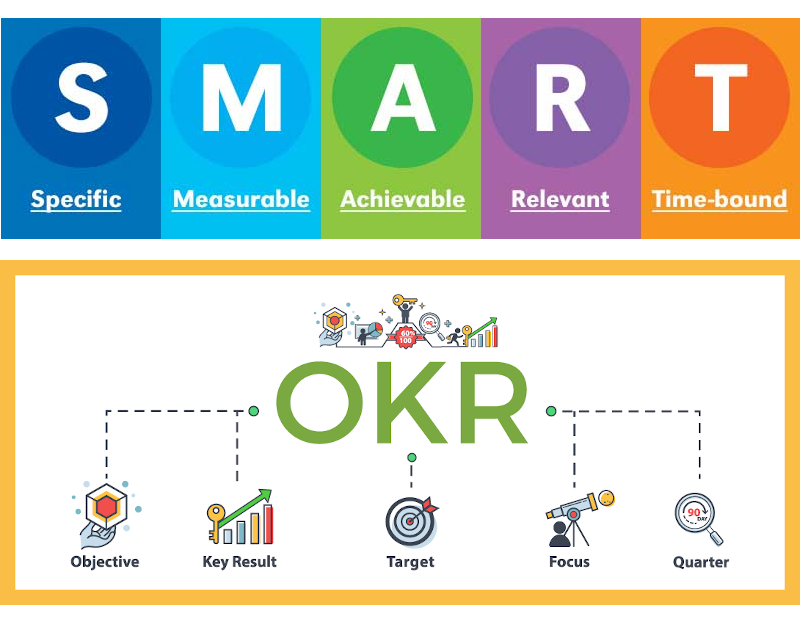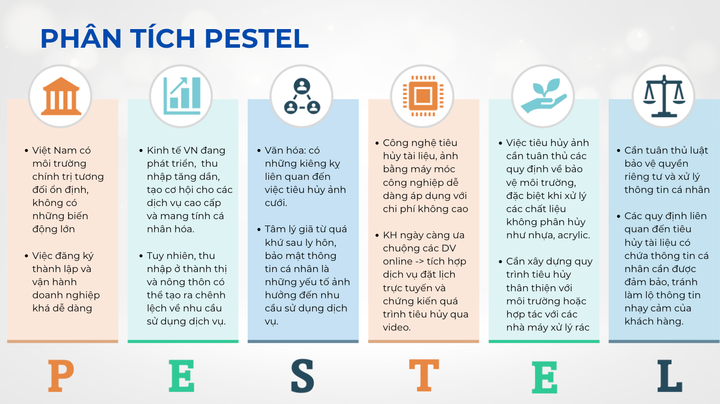Crafting Goals for Project Triumph: SMART and OKR Demystified

The success of any project hinges on clear and effective goal setting. Two popular methodologies, SMART and OKR, have revolutionized how organizations and individuals set and achieve their goals. In this blog post, we'll explore how combining the strengths of both SMART and OKR can provide a comprehensive and versatile approach to goal setting for your projects.
SMART Goals
The SMART framework is known for its simplicity and effectiveness in setting Specific, Measurable, Achievable, Relevant, and Time-bound goals. Let's dive deeper into each component with additional examples:
Specific: Your goals should be crystal clear and focused. They should answer the questions of what, why, and how. For example:
- Vague: "Improve customer service."
- Specific: "Reduce customer response time by 50% through additional training and improved processes."
Measurable: Goals must have quantifiable metrics that allow for progress tracking. The "how much" or "how many" should be apparent in your goal. Additional examples:
- Non-measurable: "Increase sales."
- Measurable: "Increase monthly sales revenue by 15% within six months."
Achievable: Goals should be challenging but realistic. Additional examples:
- Unrealistic: "Double our client base in one month."
- Achievable: "Expand our client base by 25% over the next year."
Relevant: Goals should align with the project's overall purpose and objectives. Additional examples:
- Irrelevant: "Launch a new product line that has no connection to our core business."
- Relevant: "Diversify our product offerings to meet the evolving needs of our current customer base."
Time-bound: Goals must have a clear deadline or timeframe. A timeline creates a sense of urgency and helps prioritize tasks. Additional examples:
- No timeframe: "Improve website loading speed."
- Time-bound: "Improve website loading speed by 20% within the next two months."
OKR (Objectives and Key Results) Recap
OKR, or Objectives and Key Results, is a framework used by organizations like Google to set ambitious goals and measure progress through key results. Here are additional examples:
Objectives: Objectives are ambitious, qualitative goals that describe what you aim to achieve. These objectives should align with your project's mission and vision. Additional examples:
- Vague: "Enhance user experience."
- Objective: "Create a user-centric experience that drives customer satisfaction and loyalty."
Key Results: Key Results are specific, quantifiable, and time-bound metrics that track progress towards your objectives. They offer a way to measure success and provide clarity. Additional examples:
- Non-specific: "Increase user engagement."
- Key Results: "Increase user engagement by achieving a 15% increase in app session duration, a 10% increase in daily active users, and a 20% increase in feature utilization over the next quarter."
Combining SMART and OKR
By integrating elements of SMART within the OKR framework, you can enhance goal setting and execution. Here's how with additional examples:
Make your objectives specific by including details about what, why, and how.
- Non-specific: "Drive product innovation."
- Specific: "Drive product innovation by developing and launching three new cutting-edge features within the next six months, which align with emerging market trends and user feedback."
Ensure key results are measurable, achievable, relevant, and time-bound.
- Unclear: "Enhance customer satisfaction."
- Key Results: "Enhance customer satisfaction by achieving a Net Promoter Score (NPS) of 50 or higher within the next quarter, while reducing support ticket response times by 25%."
Best Practices for Effective Goal Setting
Engage your team: Collaborative goal setting fosters buy-in and a shared sense of purpose. Example:
- Involve your team in brainstorming and refining the project's objectives and key results to ensure everyone is aligned and motivated.
Prioritize ruthlessly: Not all goals are equally important. Focus on what truly matters. Example:
- Prioritize key results that have the most significant impact on your project's success and allocate resources accordingly.
Regularly review and adapt: Assess progress, and be prepared to adjust goals as needed. Example:
- Conduct regular check-ins to review the status of key results and make adjustments based on changing circumstances or new insights.
Maintain motivation: Recognize and celebrate milestones and achievements to keep your team inspired. Example:
- Celebrate achieving key results and acknowledge the hard work and dedication of your team members through rewards or public recognition.
SMART and OKR are two powerful goal-setting frameworks that can be used in tandem to maximize project success. Whether you favor the simplicity of SMART or the ambition of OKR, combining these methodologies allows for better focus, measurable outcomes, and a more successful project. Remember that setting goals is just the beginning; consistent effort, adaptability, and team collaboration are essential to realizing your project's full potential.



Comments ()